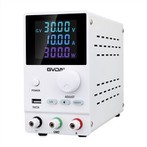Differences and Characteristics Between Fluorescence Microscopes and Ordinary Light Microscopes
Fluorescence microscope is different from ordinary optical microscope in that it does not observe specimens under the illumination of ordinary light sources. Instead, it uses a certain wavelength of light (usually ultraviolet light, blue violet light) to excite the fluorescent substances inside the specimen under the microscope, causing them to emit fluorescence. Therefore, the role of the light source in fluorescence microscope is not direct illumination, but as an energy source to excite the fluorescent substances inside the specimen. The reason why we can observe specimens is not due to the illumination of the light source, but the fluorescence phenomenon exhibited by the fluorescent substances inside the specimen after absorbing the excited light energy. From this, it can be seen that the characteristic of fluorescence microscopy is mainly that its light source can supply a large amount of excitation light in a specific wavelength range, so that the fluorescent substances in the specimen can obtain the necessary intensity of excitation light. At the same time, fluorescence microscopes must have corresponding filter systems. Fluorescence microscope is a fundamental tool in fluorescence tissue chemistry. It is composed of main components such as an ultra-high voltage light source, a filter system (including excitation and suppression filter plates), an optical system, and a photography system. It uses light of a certain wavelength to excite the specimen and emit fluorescence.
1. Methods of fluorescence excitation: According to the wavelength range of light, there are two types: UV excitation method (using ultraviolet illumination) and BV excitation method (using blue violet light). The UV excitation method uses near ultraviolet light shorter than 400nm for excitation. This method does not have visible excitation light, so the observed fluorescence exhibits the inherent fluorescence of the dye, making it easy to distinguish the specific fluorescence on the specimen from the self fluorescence of the background tissue.
2. BV excitation method: It involves excitation from ultraviolet to blue light centered at 404nm and 434nm. This method uses blue light to irradiate the specimen, so the cut-off filter of the fluorescence observation system must use a filter that can completely block blue light and fully pass through the required green and yellow fluorescence. Fluorescent pigments used for fluorescent antibody method. The maximum absorption wavelength of excitation light and the maximum emission wavelength of fluorescence are relatively close, so the filter used in BV excitation method must use a sharp cut filter. This method can use blue light as excitation light, so the absorption efficiency of fluorescent pigments is high, and brighter images can be obtained. The disadvantage is that fluorescence below 500nm cannot be seen, while fluorescence above 500nm makes the entire image appear yellow. In the fluorescent antibody method, the specificity is mostly determined by the color unique to fluorescent pigments, so when discussing subtle specificity, the drawbacks of the BV excitation method mentioned above often have a significant impact.






